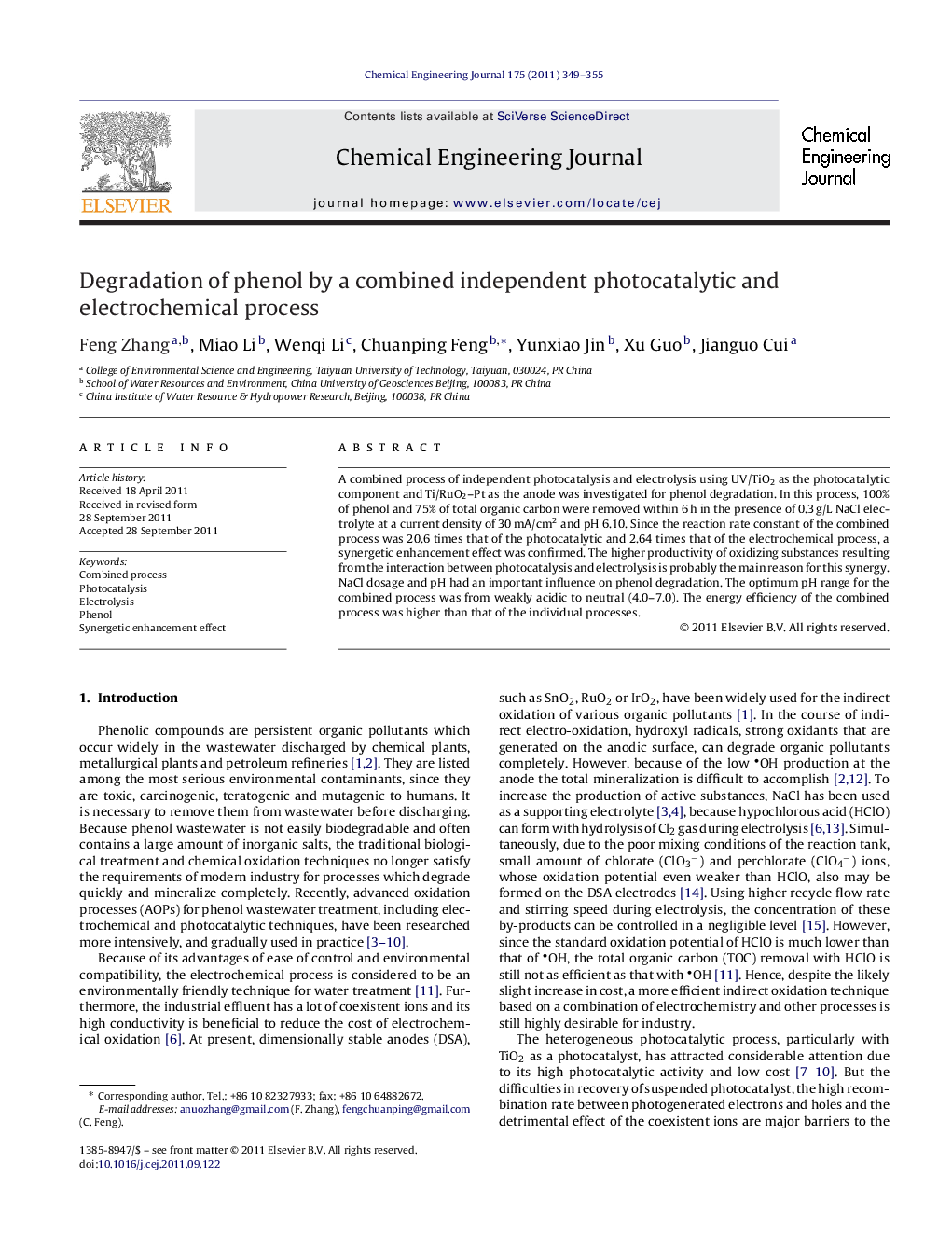| Article ID | Journal | Published Year | Pages | File Type |
|---|---|---|---|---|
| 150991 | Chemical Engineering Journal | 2011 | 7 Pages |
A combined process of independent photocatalysis and electrolysis using UV/TiO2 as the photocatalytic component and Ti/RuO2–Pt as the anode was investigated for phenol degradation. In this process, 100% of phenol and 75% of total organic carbon were removed within 6 h in the presence of 0.3 g/L NaCl electrolyte at a current density of 30 mA/cm2 and pH 6.10. Since the reaction rate constant of the combined process was 20.6 times that of the photocatalytic and 2.64 times that of the electrochemical process, a synergetic enhancement effect was confirmed. The higher productivity of oxidizing substances resulting from the interaction between photocatalysis and electrolysis is probably the main reason for this synergy. NaCl dosage and pH had an important influence on phenol degradation. The optimum pH range for the combined process was from weakly acidic to neutral (4.0–7.0). The energy efficiency of the combined process was higher than that of the individual processes.
► Phenol and TOC was removed more efficiently by the combination of two existing treatment processes. ► The interaction between photocatalysis and electrolysis brought higher productivity of active substances. ► The energy efficiency of the combined process was higher than that of the individual processes.
